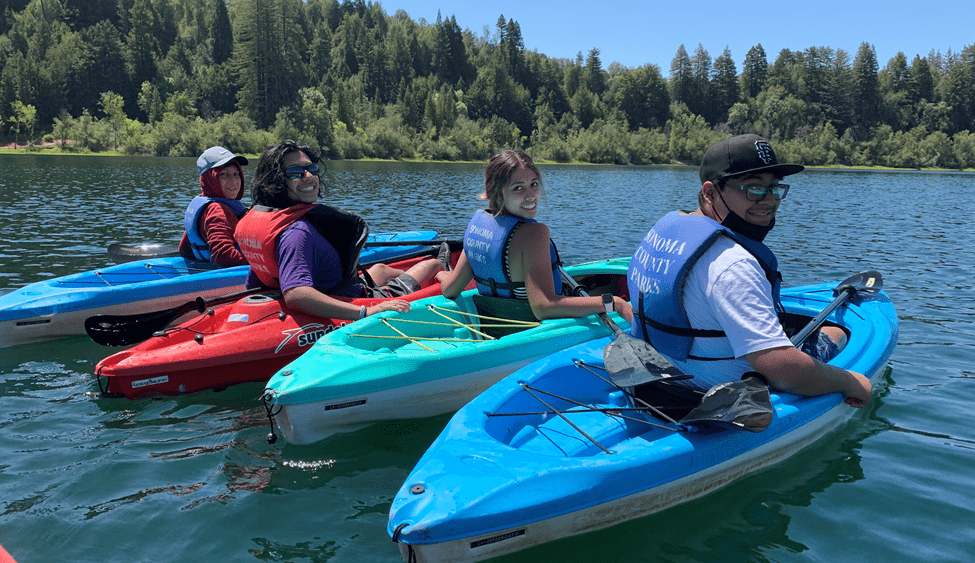
San Rafael, CA – As the Center for Disease Control provides new data supporting the reopening of classrooms across the nation, schools across Marin County have already demonstrated how it can be done safely for both students and staff. One bright spot during the COVID-19 pandemic has been the success of Marin schools in preventing the spread among students, teachers, and campus staff after the partial return to in-person learning almost six months ago.
Closely following Public Health protocols and procedures delineated in individual school safety plans, some campuses were allowed to reopen September 8, 2020, after nearly six months of pandemic-caused closures and exclusively online learning. Since September, many schools have expanded the number of students they are serving in-person using a carefully planned, phased-in strategy.
According to figures maintained by Marin County Public Health and the Marin County Office of Education (MCOE), there have been only 10 cases of suspected in-school transmission of COVID-19 as of February 5. Of those, five were student-to-student, three were adult-to-adult, and two were adult-to-student. There have been no student-to-adult transmissions in school.
Local public schools were first ordered closed on March 16, 2020. Counting up each day that any student attends school in person, this week Marin will reach 1 million combined “student days” of in-classroom instruction since the partial reopening September 8.
Dr. Lisa Santora, Marin County Deputy Public Health Officer, said it’s a meaningful milestone.
“We see each day that a child is in school, joining their classmates and teachers, as a success,” she said. “Every day that’s the reality for over 17,000 Marin students, and the number is rising. The landmark of 1 million combined days in school for children across Marin is something the whole community can be proud of.”
Santora said data has shown that schools are not a driver of community transmission but rather provide safe, stable, structured, supervised, and supportive environments that reduce risk behaviors associated with COVID-19 transmission such as household mixing for child care and unsupervised gatherings for socialization.
“We are deeply indebted to the leadership of teachers, classified staff, administrators, community partners, and elected officials who recognize that the best place for students is in their schools and who work tirelessly to create safer environments for students, staff, and teachers,” Santora added. “MCOE and Public Health are committed to a transparent, publicly visible process that engages and informs our community as we move thru phases of this pandemic and re-opening all schools in Marin for full-time, in-person learning.”
As of February 5, 87% of Marin’s schools had students receiving in-person instruction on their campuses ranging from two days per week to five days per week. Countywide, an average of 17,639 students per day were learning in classrooms, or roughly 55% of all students in public, private, independent and parochial schools. The figures show 164 students and 42 school staff members who have tested positive for the coronavirus during the September-January span over 96 days of in-person instruction, with only nine cases attributed to in-school transmission.
In Marin, 98% of elementary schools, 96% of K-8 schools, 89% of middle schools, and 29% of high schools have offered in-person instruction on campuses since reopening was started in September.
“Marin County schools, public and private, have led the way in showing that schools can be reopened safely for students and staff,” said Mary Jane Burke, Marin County Superintendent of Schools. “This would not be possible without the guidance and support provided by Marin County Public Health, or, without the courage and dedication of the nearly three out of four Marin teachers and school staff who are providing in-person instruction.”
After successfully operating child care programs and piloting in-person instruction in spring 2020, Public Health and MCOE issued A Public Health Guided Return to Site-Based Classroom Instruction in June to facilitate the return to site-based classroom instruction. They followed with guidance through the state’s waiver process, which led to the re-opening of some schools.
Throughout the pandemic, the educational achievement gap has widened and student well-being deteriorated from social deprivation and isolation, Santora said. The so-called digital divide – inconsistent access to internet services because of socioeconomic reasons – also increased as the schools switched to remote learning. The issue has prompted several efforts to bring wireless service to lower-income neighborhoods such as Marin City and the Canal neighborhood of San Rafael (a larger countywide collaboration called Digital Marin is just getting underway).
Especially noteworthy is that elementary and middle schools in Marin’s most socioeconomically challenged school districts were among the first to open to in-person instruction. Santora said Superintendent Dr. Itoco Garcia and the Sausalito Marin City School District provided a shining example as they fully opened Bayside Martin Luther King Jr. School.
“They were steadfastly committed to implementing safe, in-person instruction for the students and families of Marin City while making advancements in desegregation and reducing the digital divide,” she said.
More statistics can be found on the MCOE COVID-19 Dashboard, which is updated each Friday afternoon.



